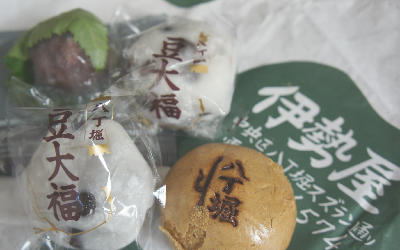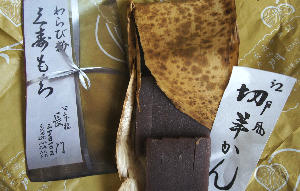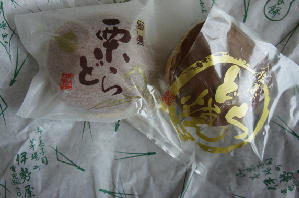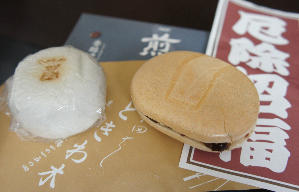Hatchobori was buried during the Kanei era, and a waterway called Hatchobori in eight towns (approximately 873m) was excavated. After the Teramachi era from 1611 (1611) to 30 years, the Shimomachi district and the Meiji Restoration, which changed into the "Kumiyashiki of Yoriki Concentric" Shimomachi district. Hatchobori, which became a burnt field in the Great East Japan Earthquake of 1923, and Nishi Hatchobori 3.4-chome was completely destroyed in the US incendiary bomb in 1945 ... now a town where shops, office buildings, and condominiums are lined up neatly. ◆The 50th anniversary commemorative magazine "My Town Hatchobori" Web version of the town council establishment
(Aside from) My ancestors were Nishi Hatchobori 4-chome, and since the Edo period, Edo Komon and embroidery were the family business, but due to the Great East Japan Earthquake, there were no business closures or historical materials.
<Start> Hatchobori Station A2 → "Hatchobori (Sakuragawa) Ruins, Sakuragawa Park" → "Hibiya Inari," → "Monument of Takenori Horibe" → ![]() "Kameshima Bridge"
"Kameshima Bridge"
![]() In the Edo period, Kameshima Bridge, where Funami Bansho was located, see the Kamejima River, Nihonbashi Suimon, and Sky Tree from Hashigami.
In the Edo period, Kameshima Bridge, where Funami Bansho was located, see the Kamejima River, Nihonbashi Suimon, and Sky Tree from Hashigami.
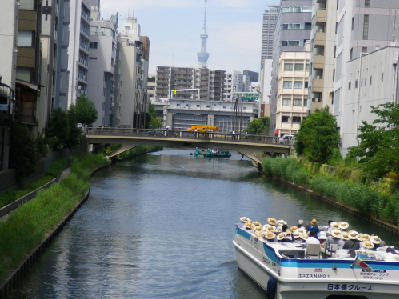
![]() Walk at Hatchobori 3-chome (Heisei-dori) → Watch out! Lotus cutlet curry "Rodan" → portable shrine, a Shinto-Buddhist store, Sangoro Akiyama Shoten → Hatchobori Suzuran Street → Japanese sweets Nishi-Hatchobori "Aoyagi" → Japanese sweets "Hatchobori Iseya" → "The site of Hatchobori's power and concentric mansion" <goal>
Walk at Hatchobori 3-chome (Heisei-dori) → Watch out! Lotus cutlet curry "Rodan" → portable shrine, a Shinto-Buddhist store, Sangoro Akiyama Shoten → Hatchobori Suzuran Street → Japanese sweets Nishi-Hatchobori "Aoyagi" → Japanese sweets "Hatchobori Iseya" → "The site of Hatchobori's power and concentric mansion" <goal>
↓![]() "Aoyagi" was founded in 1920, and the third generation recommendation is "Ajikaku" and "Chrysanthemum" of the National Confectionery Tourism Expo Honorary Daikin Award plaque ... Raw Japanese sweets with beautiful and masculine taste! That's right.
"Aoyagi" was founded in 1920, and the third generation recommendation is "Ajikaku" and "Chrysanthemum" of the National Confectionery Tourism Expo Honorary Daikin Award plaque ... Raw Japanese sweets with beautiful and masculine taste! That's right.
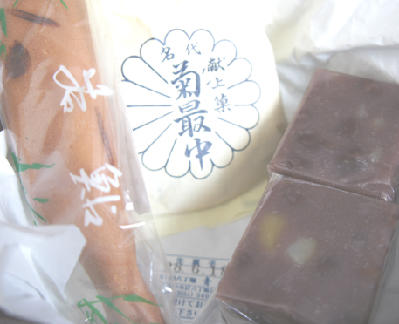
↓![]() "Hatchobori Iseya" ... Since its establishment in 1907, we have been particular about rice cakes and beans, "Don't degrade the quality" ... We have been protecting from our predecessors and trying to keep tea sweets that we usually use without hesitation. "From HP,"
"Hatchobori Iseya" ... Since its establishment in 1907, we have been particular about rice cakes and beans, "Don't degrade the quality" ... We have been protecting from our predecessors and trying to keep tea sweets that we usually use without hesitation. "From HP,"
